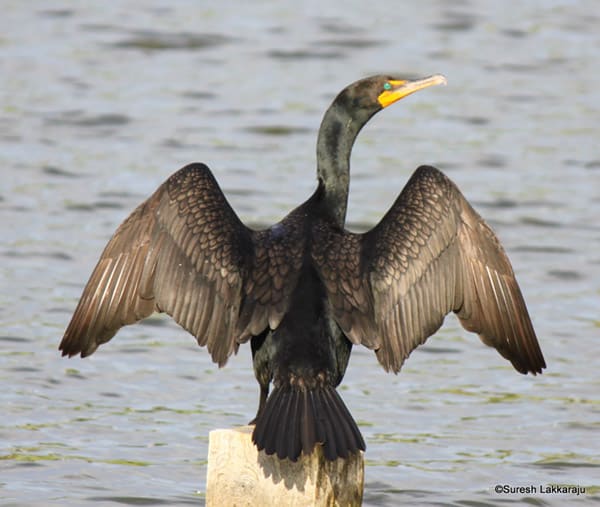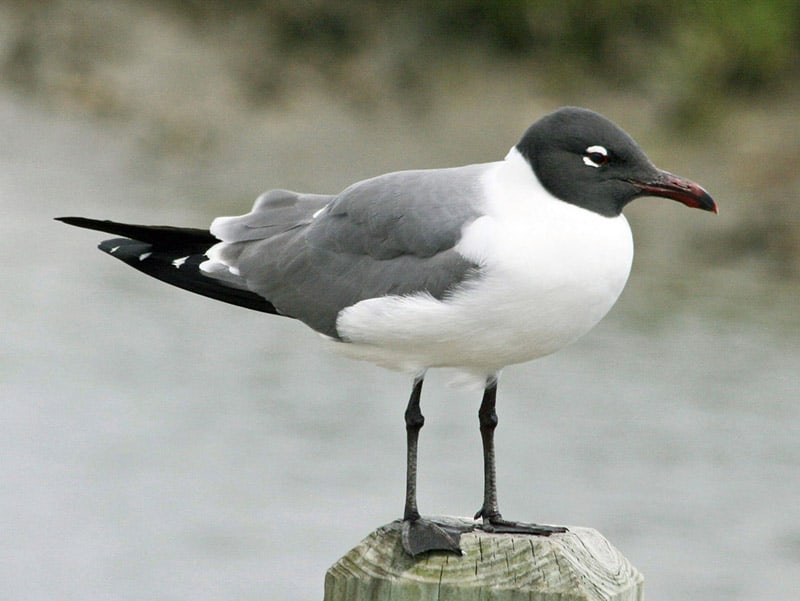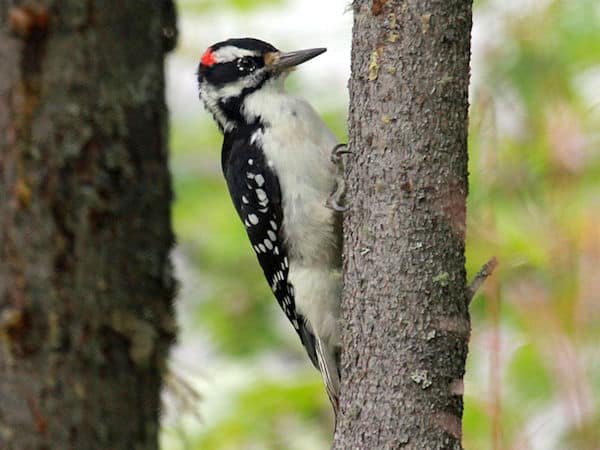Often, the somewhat snakelike black neck and head is all that betrays the presence of a swimming double-crested cormorant. With practice, birders can easily distinguish a distant, flying double-crested cormorant from a pelican, goose, heron, or other large bird by its all-dark form, thick and somewhat wavy neck, longish tail, and slow wingbeats.
The cormorant’s bright orange throat, bill, and lores stand out on its otherwise black body. Even its heavy webbed feet are blackish. Immatures are dull brown with whitish necks and chests. In this species, it’s usually not visible.
On the Gulf Coast, from Texas to western Louisiana, watch for the smaller, thinner, longer-tailed neotropic cormorant. During spring, this smaller species has an angled, white fringe behind its smaller, orange throat.
Listen for
Nonvocal away from nesting colonies.
Find it
In general, this water bird is most numerous in the Southeast during late fall, winter, and early spring. Most double-crested cormorant populations are migratory, and these birds turn up at rivers, marshes, swamps, large lakes, bays, and along the coast.
Because they travel widely during the day, don’t be surprised to see cormorants flying over inland habitats in loose formation. Double-crested cormorants breed in western Alaska, central Canada, and down both coasts of the United States; they winter along the coast and well inland throughout the Southeast.
Feed It
Double-crested cormorants are very adaptable, seeking a wide variety of fish, and also crustaceans, amphibians, and other aquatic animals. Their webbed feet propel them under water after their aquatic prey, and much of their feeding is done not far beneath the surface.
Nesting Behavior
Double-crested cormorants nest in colonies in trees, on cliffs, and on islands. Females build much of the platform nest, while males provide the many sticks and other materials. Females usually lay three or four eggs, which both parents incubate for about a month. Young leave the nest 21 to 30 days after hatching, but are not fully on their own until after two months.
WOW!
Double-crested cormorants declined earlier in the mid-twentieth century due to disturbance and hunting at nesting grounds, followed by DDT and other pesticide contamination. Protection, wetland conservation, and the DDT ban have helped these birds recover.




